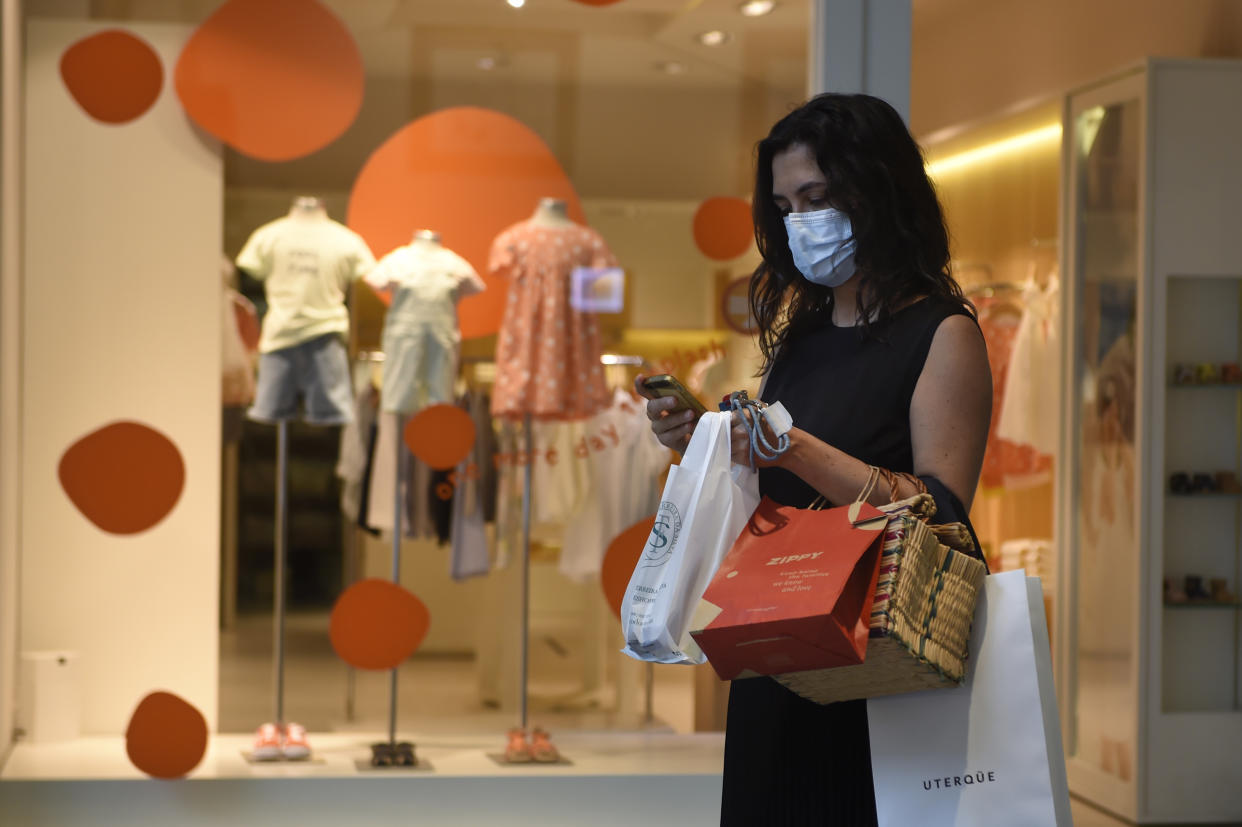Coronavirus: Three ways the pandemic could play out

An expert has explained three ways the coronavirus outbreak may play out.
The pandemic has put much of the world on lockdown, with officials slowly starting to ease restrictions.
The economy, travel industry and people’s mental health have all taken a battering as the world battles the unprecedented outbreak.
With many eager to start a “new normal”, Professor Mark Woolhouse, from the University of Edinburgh, has outlined three paths the pandemic could take.
Early research suggests the coronavirus is mild in four out of five cases, however, it can trigger a respiratory disease called COVID-19.

Coronavirus: How may the pandemic play out?
The coronavirus seemed to come out of nowhere, with many undoubtedly wishing it would disappear as quickly.
Without an effective vaccine, however, this seems increasingly unlikely.
Speaking at a Science Media Centre briefing, Prof Woolhouse said: “[The] first [scenario] is global eradication of the virus.”
The coronavirus is one of seven strains of a virus class that are known to infect humans.
Of all the strains, it is most genetically similar to severe acute respiratory syndrome (Sars), which killed 774 people during its 2002/3 outbreak.
No Sars cases have been reported since 2004, which initially left some optimistic the circulating coronavirus could be similarly short-lived.
Unlike Sars, the new coronavirus does not always cause symptoms. Asymptomatic patients are still able to pass it on, however.
Global eradication ‘not looking promising’
“Sars couldn’t become seasonal because its transmission only really after symptoms became apparent meant we were able to contain and eradicate it,” Dr Michael Skinner, from Imperial College London has previously told Yahoo UK.
“With [the new coronavirus], there’s little confidence we’ll be able to put it back into a stoppered bottle (like Sars) until we have a vaccine”.
Jabs help to create herd immunity; when a sufficient number of people have been exposed to prevent a virus taking hold in a community.
Herd immunity can occur naturally if patients recover from the virus and have antibodies, immune-fighting proteins, against it.
“Only a few [people worldwide] have been exposed so far [to the coronavirus]”, said Prof Woolhouse.
“We’ve got an awful long way to go before most of us have been exposed.
“Global eradication is not looking promising.”
Prof Woolhouse stressed this is his “personal view” and it is not possible to make accurate long-term predictions at this stage of the pandemic.
Second coronavirus wave ‘a clear danger’
The second scenario involves the coronavirus successfully being suppressed during the ongoing initial outbreak, only for an additional wave to emerge down the line.
“If we have to live with COVID-19, can we prevent epidemics on the scale we’re seeing now?,” said Prof Woolhouse.
The coronavirus’s R number, the number of people a patient statistically goes on to infect, is thought to be three.
“Measures [to bring it down] have to be permanent,” said Prof Woolhouse.
“The lockdown was never intended to be permanent; [it’s] not possible to be permanent.
“[We] want to get R down with a vaccine, but we don’t have one.
“The conclusion is a second wave is a clear danger.”
Prof John Edmunds, from the London School of Hygiene & Tropical Medicine, added there is a “need” to lift restrictions in order to restart the economy, improve mental health and get people socialising again.
The government’s test, trace and isolate system may “compensate” for any rise to the R number as a result of this relaxation, he added.
Stopping community transition like New Zealand
Assuming continued social distancing helps to bring the R below one, the level needed to prevent an outbreak growing, the third scenario is “containment”.
Prof Woolhouse cited New Zealand, which stopped community transmission of the coronavirus in April.
He stressed, however, this involves “intensive surveillance, large scale screening, quarantining, residual social distancing”.
“That is a possible new normal,” said Prof Woolhouse.
“If we don’t like it, we have to find other ways of living with COVID-19.”
What is the coronavirus?
Since the coronavirus outbreak was identified at the end of 2019, more than 6.1 million cases have been confirmed worldwide, according to Johns Hopkins University.
Of these cases, over 2.6 million are known to have “recovered”.
Globally, the death toll has exceeded 372,600.
The coronavirus mainly spreads face to face via infected droplets expelled in a cough or sneeze.
There is also evidence it can spread in faeces and survive on surfaces.
Symptoms include fever, cough and a loss of taste or smell.
The coronavirus has no “set” treatment, with most patients naturally fighting off the infection.
Those requiring hospitalisation are given “supportive care”, like ventilation, while their immune system gets to work.
Officials urge people ward off infection by washing their hands regularly and maintaining social distancing.
Coronavirus: what happened today
Click here to sign up to the latest news, advice and information with our daily Catch-up newsletter
Read more about COVID-19
How to get a coronavirus test if you have symptoms
How easing of lockdown rules affects you
In pictures: How UK school classrooms could look in new normal
How public transport could look after lockdown
How our public spaces will change in the future
Help and advice
Read the full list of official FAQs here
10 tips from the NHS to help deal with anxiety
What to do if you think you have symptoms
How to get help if you've been furloughed



